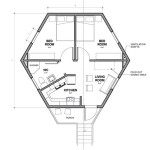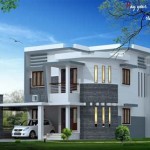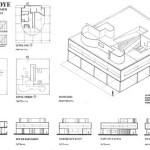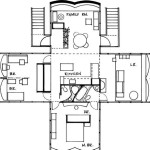Small House Plans That Live Large: Maximizing Space and Functionality
The appeal of small house living is experiencing a significant resurgence globally. Driven by factors such as environmental consciousness, financial prudence, and a desire for simplified lifestyles, more individuals and families are exploring the benefits of smaller footprints. However, the challenge lies in achieving comfort and functionality within limited square footage. Small house plans that "live large" are designed to address this challenge, prioritizing efficient space utilization, smart storage solutions, and thoughtful design principles to create homes that feel spacious and livable despite their diminutive size.
Designing a small house that lives large necessitates careful planning and a focus on maximizing every square inch. This often involves rethinking traditional design norms and embracing innovative solutions. The principles of open-concept living, vertical space exploitation, and multi-functional design become paramount in achieving the desired outcome. The goal is not simply to shrink the size of a conventional house, but to reimagine the entire concept of home to align with the realities of limited space.
Open-Concept Living and Spatial Flow
One of the most effective strategies for making a small house feel larger is embracing an open-concept layout. This involves minimizing the number of interior walls, particularly between the living room, dining area, and kitchen. By removing these barriers, the available space is visually expanded, creating a sense of openness and freedom of movement. This approach also facilitates better natural light penetration, further enhancing the feeling of spaciousness.
Careful consideration must be given to the flow of space within the open-concept area. Functional zones should be clearly defined, even without physical walls. This can be achieved through strategic furniture placement, changes in flooring materials, or subtle shifts in ceiling height. For example, a kitchen island can serve as a visual and functional divider between the kitchen and living area, while also providing additional counter space and storage.
The use of large windows and sliding glass doors is also crucial in maximizing the perceived size of a small house. These architectural features not only allow for ample natural light but also create a strong connection between the interior and exterior spaces. This connection visually extends the living area beyond the confines of the walls, making the house feel much larger than it actually is. Strategically placed mirrors can also be used to reflect light and create the illusion of greater space.
In addition to the main living areas, open-concept principles can be applied to other parts of the house as well. For instance, a combined bedroom and study can be designed with a flexible partition or strategically placed furniture to separate the sleeping and working areas. This approach allows for greater flexibility and adaptability, making the space more versatile and functional.
Vertical Space Utilization and Smart Storage Solutions
In small house design, maximizing vertical space is essential. High ceilings can create a sense of grandeur and allow for the incorporation of loft spaces for sleeping, storage, or additional living areas. Even without particularly high ceilings, leveraging vertical space through strategic shelving and storage solutions is critical for decluttering and maximizing usable area.
Built-in storage solutions are particularly effective in small houses. These can include custom cabinets, shelving units, and drawers that are designed to fit seamlessly into the available space. By integrating storage into the walls and other structural elements, valuable floor space can be saved. For example, a staircase can be designed with built-in drawers or storage compartments underneath each step.
Multi-functional furniture is another key element of smart storage design. Sofas that convert into beds, coffee tables with hidden storage compartments, and dining tables that can be folded away when not in use are all examples of furniture that can serve multiple purposes while minimizing clutter. These types of furniture are particularly useful in small apartments or studios where space is at a premium.
The design of closets and wardrobes should also be carefully considered. Utilizing vertical shelving and hanging rods effectively can maximize the storage capacity of these spaces. Consider using clear storage containers to easily identify the contents without having to rummage through everything. Wall-mounted organizers and hooks can also be used to store smaller items such as keys, wallets, and accessories.
Multi-Functional Design and Adaptable Spaces
The concept of multi-functional design is central to creating small house plans that live large. This involves designing spaces and furniture that can serve multiple purposes, adapting to the changing needs of the occupants. By combining different functions into a single space, the overall footprint of the house can be significantly reduced without sacrificing functionality.
One common example of multi-functional design is the combination of a guest room and home office. This can be achieved by using a sofa bed or a Murphy bed that can be easily folded away when not in use. The room can then be used as a dedicated workspace during the day and transformed into a comfortable guest room at night. The use of modular furniture can also allow for greater flexibility in adapting the space to different needs.
The kitchen is another area where multi-functional design can be particularly effective. A kitchen island can serve as a cooking surface, a dining table, and a storage unit. Similarly, a breakfast bar can provide additional seating and counter space while also serving as a casual dining area. The use of open shelving in the kitchen can allows for storage and display of kitchenware.
Outdoor spaces, such as patios and decks, can also be designed to be multi-functional. A patio can be used for dining, entertaining, and relaxing. By incorporating features such as outdoor kitchens, seating areas, and fire pits, the patio can become an extension of the living space, effectively increasing the overall size of the house. A well-designed garden can also provide a sense of tranquility and connection to nature, enhancing the overall living experience.
Adaptable spaces also contribute to a feeling of spaciousness and flexibility. This can be achieved through the use of movable walls, flexible partitions, and modular furniture. These features allow the occupants to reconfigure the layout of the house to suit their changing needs and preferences. For example, a movable wall can be used to divide a large living area into two smaller rooms, providing privacy and separation when needed.
Ultimately, small house plans that live large are about more than just minimizing square footage. They are about maximizing the potential of every space, embracing innovative design solutions, and creating homes that are both functional and aesthetically pleasing. By focusing on open-concept living, vertical space utilization, smart storage solutions, and multi-functional design, it is possible to create small houses that feel spacious, comfortable, and truly livable.

Tiny Homes That Live Large Dfd House Plans Blog

Cottages Small House Plans With Big Features Blog Homeplans Com

Craftsman Style House Plan 3 Beds 2 Baths 1885 Sq Ft 929 923 Floor Plans How To

Live Large With A Small House Plan Weber Design Group Naples Fl

Cottages Small House Plans With Big Features Blog Homeplans Com

Live Large In A Small House With An Open Floor Plan Bungalow Company
10 Small House Plans With Open Floor Blog Homeplans Com

Live Large With A Small House Plan Weber Design Group Naples Fl

10 Small House Plans With Open Floor Blog Homeplans Com

Tiny Home Floor Plans Modern Lakefront Cottage Coastal America S Best House Blog








